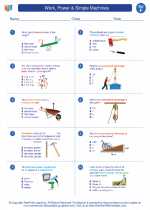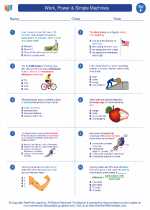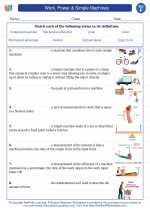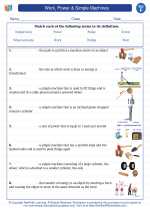Magnetic Field
A magnetic field is a region around a magnet or a current-carrying conductor where magnetic forces are experienced. It is an invisible force that exerts a pull on certain materials, such as iron, nickel, and cobalt, and can also affect the motion of electrically charged particles.
Key Concepts
- Magnetic Field Lines: Magnetic field lines represent the direction and strength of a magnetic field. They always form closed loops and point from the north pole to the south pole outside the magnet and from south to north inside the magnet.
- Magnetic Poles: Every magnet has two poles, known as the north pole and the south pole. Like poles repel each other, while opposite poles attract each other.
- Magnetic Force: A magnetic field exerts a force on a moving charged particle, causing it to experience a deflection. This force is perpendicular to both the magnetic field and the velocity of the charged particle.
- Applications: Magnetic fields have various practical applications, including in electric motors, generators, MRI machines, and compasses.
Study Guide
When studying magnetic fields, consider the following key points:
- Understand the concept of magnetic field lines and how they represent the direction and strength of the field.
- Learn about the behavior of magnetic poles and how like poles repel while opposite poles attract.
- Explore the relationship between a magnetic field and the force experienced by a moving charged particle.
- Investigate the real-world applications of magnetic fields and their significance in various devices and technologies.
- Practice drawing and interpreting magnetic field lines in different scenarios, such as around bar magnets, solenoids, and current-carrying wires.
Understanding magnetic fields is essential for comprehending the behavior of magnets, electromagnets, and the interaction between magnetic fields and electric currents. By mastering the fundamental principles of magnetic fields, you can gain insights into a wide range of natural phenomena and technological innovations.
.◂Science Worksheets and Study Guides Sixth Grade. Work, Power & Simple Machines
Worksheet/Answer key Work, Power & Simple Machines
Work, Power & Simple Machines  Worksheet/Answer key
Worksheet/Answer key Work, Power & Simple Machines
Work, Power & Simple Machines  Worksheet/Answer key
Worksheet/Answer key Work, Power & Simple Machines
Work, Power & Simple Machines  Vocabulary/Answer key
Vocabulary/Answer key Work, Power & Simple Machines
Work, Power & Simple Machines  Vocabulary/Answer key
Vocabulary/Answer key Work, Power & Simple Machines
Work, Power & Simple Machines 

 Worksheet/Answer key
Worksheet/Answer key
 Worksheet/Answer key
Worksheet/Answer key
 Vocabulary/Answer key
Vocabulary/Answer key
 Vocabulary/Answer key
Vocabulary/Answer key

The resources above cover the following skills:
Reading Standards for Literacy in Science and Technical Subjects
Craft and Structure
Determine the meaning of symbols, key terms, and other domain-specific words and phrases as they are used in a specific scientific or technical context relevant to grades 6-8 texts and topics.